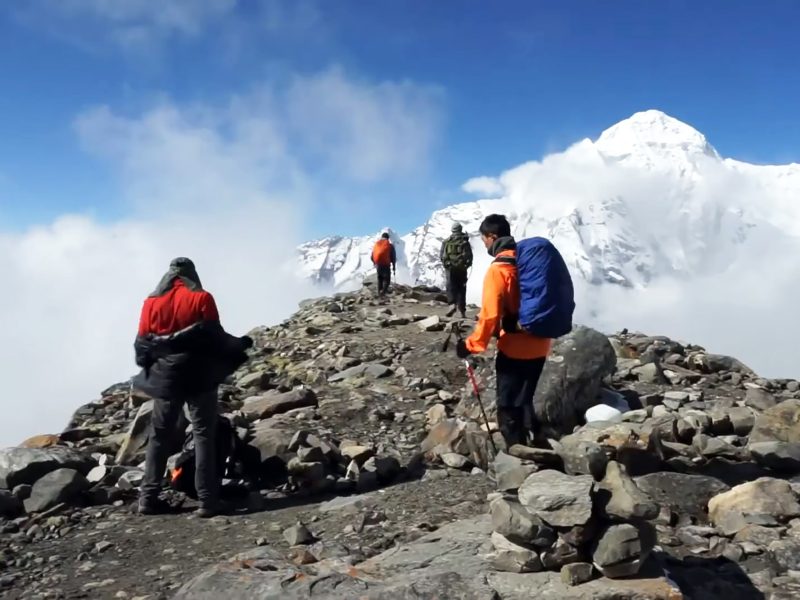Essential personal climbing gear you’ll need to conquer your dream peak, compiled with insights from the Female Guide Kathmandu. This is a general informations for mountains below 7,000 meters. Always consult experts for specific recommendations based on your chosen mountain, season, and weather conditions.
Safety Essentials:
- Alpine Climbing Harness: Distributes weight and provides a secure anchor for ropes.
- Crampons: Metal attachments for boots that give superior grip on snow and ice.
- Ice Axe: Helps with balance, self-arrest in falls, and breaking trail.
- Ascender: Mechanical device that assists with climbing ropes.
- Multi-LED Headlamp (with extra batteries!): Provides hands-free light in low-light conditions.
- Karabiners (Locking and Non-Locking): Metal connectors that link ropes, harnesses, and other gear.
- Rappel Device: Controls friction for safe descents on fixed ropes.
- Ski Poles: Adjustable poles that improve balance, especially during approach hikes.
- Slings: Versatile nylon straps for securing gear, building anchors, and temporary harnesses.
- Climbing Helmet: Protects your head from falling rocks and ice.
Performance Clothing (Layering is Key):
Upper Body:
- Base Layers: Merino wool T-shirt and long-sleeved shirts for moisture management.
- Insulation: Mid-weight fleece pullover and jacket for warmth.
- Shell: Waterproof, breathable Gore-Tex jacket with a helmet-compatible hood for wind and precipitation protection.
- Down Jackets: Lightweight down jacket for breaks, and a heavier one for high altitudes.
Hands:
- Liner Gloves: For dexterity in mild conditions.
- Mittens: Gore-Tex over-mitts with warm fleece liners for superior warmth.
Head:
- Warm Hat: Wool or synthetic for warmth.
- Balaclava: Extra warmth and windchill protection.
- Sun Protection: Neck gaiter, face mask, brimmed sun hat, and glacier sunglasses with side shields.
Lower Body:
- Hiking Shorts: Comfortable for approach hikes.
- Thermal Bottoms: Different weights (e.g., Icebreaker Merino) for layering.
- Fleece Pants: Additional warmth and comfort in cold weather.
- Shell Pants: Gore-Tex pants or bibs with full side zips for wind, rain, and snow protection.
- Down Pants (Optional): Ultimate warmth for high altitudes.
Feet:
- Climbing Boots: Double plastic boots with inner boots for warmth and support on technical sections.
- Hiking Boots: Sturdy boots with good ankle support for approach hikes.
- Socks: Liner socks, lightweight trekking socks, and thicker merino wool socks for warmth.
Luggage and Sleep System:
- Rucksack (50-70 liters): Carries essentials during climbs and may double as carry-on luggage.
- Duffle Bag (120 liters): Transports extra clothing and gear, especially if using porters.
- Sleeping Bag (-25°C/-30°F): Down sleeping bag for warmth during nights in high camps.
Remember, Essential Personal Climbing Gear just a starting point. Careful selection of your climbing gear will ensure a confident and comfortable peak-bagging adventure!


